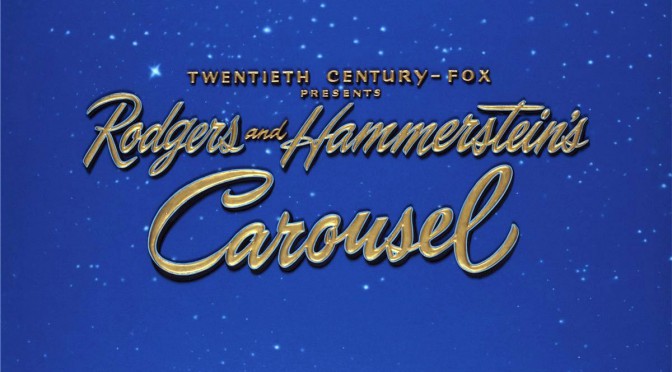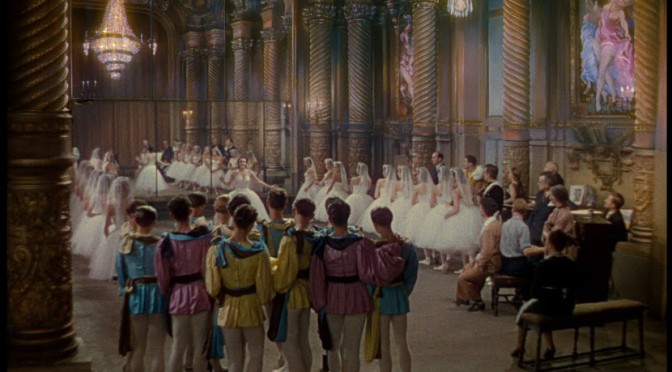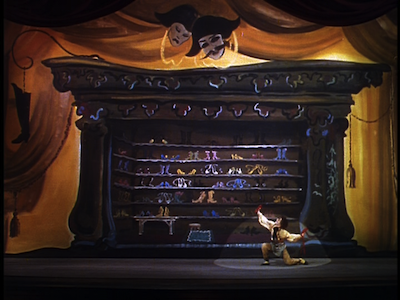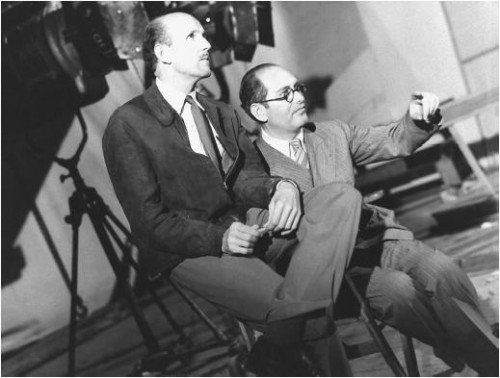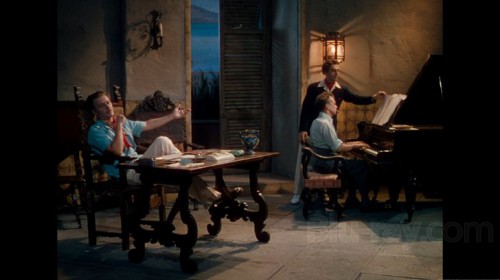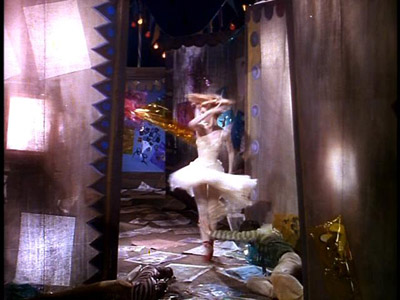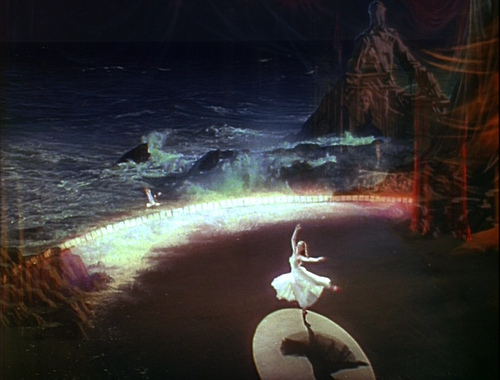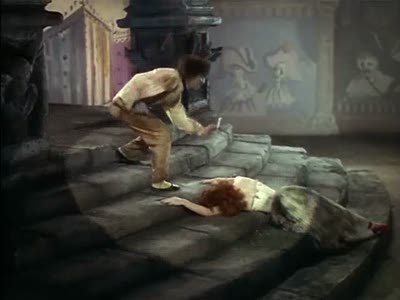In the happy world of 1950s movie musicals came one where the protagonist dies after a failed mugging, leaving his pregnant wife behind. This was Rogers and Hammerstein’s Carousel. The movie was based on the Broadway musical from 1945, itself based on an older play Liliom, by Ferenc Molnar, and made into several films prior to Carousel. Molnar’s basic theme was kept but a few changes were made to the story, and notably setting it to music, which Molnar was only convinced to allow after Rogers and Hammerstein took him to see Oklahoma! The story’s setting was shifted to 1870s sea-coastal New England. The 1956 movie of Carousel, like its Broadway predecessor, is considered one of Rogers and Hammerstein’s most seriously themed musicals, and well it should. Like Sunset Blvd, its protagonist leads off the movie dead, having been killed attempting a robbery.
This blog post will feature original costume design sketches by Academy Award winner Mary Wills, who designed the costumes for Carousel.
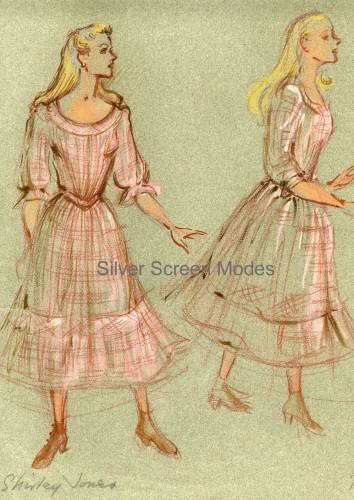


Yes, Billy Bigelow played by Gordon MacRae is dead. But he inhabits the lowest rung of Heaven, where he has lingered for years. He is told that things are not going well for the family he left behind. The Starkeeper tells him everyone in his station can have one day on earth to redeem their wrongs, which prompts the re-telling/flashback of Billy’s life. The scene opens to the cheerful music of The Carousel Waltz. He was a carousel barker, a braggart and ne’er-do-well, but handsome, and a magnet for the young ladies wherever the travelling show would take him. One day he flirts too seriously with the pretty Julie Jordan, played by Shirley Jones. His lady boss gets jealous and she sends Julie and her girlfriend Carrie packing. He gets lippy with his boss and gets fired. Billy and Julie end up spending the evening together, even after she is questioned by her own boss, a Mill owner, and then by a police officer, for hanging around with a good-for-nothing like Billy, and missing her curfew for which she’ll be fired. Even Billy asks her why. In musicals, the strongest emotions can only be expressed in song, and so she sings one of the musical’s most moving songs, the heart rending “If I Loved You,” which leads a few minutes later into his own singing of the same song.
If I Loved You
But somehow I can see
Just exactly how I’d be-
If I loved you,
Time and again I would try to say
All I’d want you to know.
If I loved you,
Words wouldn’t come in an easy way
Round in circles I’d go!
Longin’ to tell you,
But afraid and shy,
I’d let my golden chances pass me by!
Soon you’d leave me,
Off you would go in the mist of day,
Never, never to know how I loved you
If I loved you.
The song’s lyrics foretell the problem that Billy and Julie have throughout most of the film, and they never do tell each other “I love you.” during his lifetime.
But Billy and Julie marry, and Julie takes a job waiting tables at her cousin’s restaurant. Billy has no job, however, and he’s too much a smart-mouth to take the one that’s offered to him by Carrie’s fiance on his fishing boat. Instead his considers taking an offer by his old boss, Mrs. Mullins, to rejoin the Carousel. But he learns that Julie’s pregnant, and in a moment of joy, he decides he has to to stay and provide for her. On the beach he reflects about becoming a father, singing his “Soliloquy.” His vision is of a boy, but then he comes the ponder the thoughts of a girl. Either way he must provide for them, and he then decides to take up the offer of a sailor acquaintance, Jigger to rob the mill owner Mr. Bascombe.

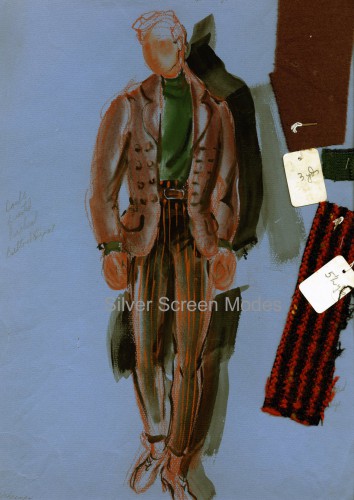

All the town-folk and the local sailors are excited about preparations for the annual “clambake” at the nearby island, cause for celebratory singing and dancing to “June is Bustin’ Out All Over.” After the merriment everybody sets sail for the clambake.

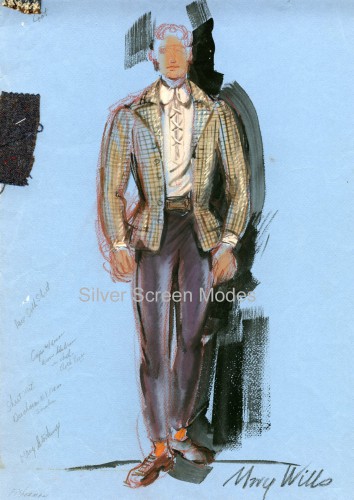
After everybody is sated from eating, Jigger makes advances on the now engaged Carrie, and then he and Billy row back to the mainland unseen, while everone else has a treasure hunt. The two lay in wait for Brancombe, Billy with a knife that Jigger persuaded him to carry. When they finally confront Bascombe, he pulls a gun and fires. Jigger runs away. Policemen show up and Billy runs up some crates rather than get arrested. He falls back down and lands on his knife, which mortally wounds him. Then everybody comes parading back still in a festive mood, only to discover that it’s Billy lying on the ground dying. Julie runs over to him and cradles him, finally telling him that she loves him, only now its too late. Seeing this scene back with the Starkeeper, Billy is still unrepentant, until the Starkeeper shows him the next scene of his daughter, now 15, a loner that the other students tease because of her late father’s reputation as a thief.
He next sees his daughter Louise, played by Susan Luckey, as the Starlight Carnival comes to town, and a handsome dancer, played by Jacques d’Damboise, takes her in hand for for a dance. She is flattered by his attention, but Billy from above quickly recognizes his type (he should know), and the dancer leaves her just as quickly as he picked her up.

All this makes her again the butt of laughter from the other school girls and she runs home in tears. Billy makes himself visible to Louise and offers her a star to console her. Thinking him a stranger and frightened she turns away, Billy in frustration slaps her hand. Louise runs to her mother, who senses Billy’s presense, but all Louise can say is that the slap felt like a kiss. Billy now invisible again, sings to Julie, and she picks up the star.
The next scene is the high school graduation ceremony, where Louise and the other girls and boys are gathered. The school principal is played by Gene Lockheart, who played the Starkeeper. His speech to the graduating class is that they need to become their own persons, and not let the faults and failures of their parents haunt them. At this time Billy, invisible, stands beside Louise and whispers for her to listen to the principal. He then goes over to where Julie is seated. As Dr. Selden, the School Principal, leads them into the song, “You’ll Never Walk Alone,” Louise puts her arm around a school mate, who does the same, and Billy tells Julie he loves her. Julie and the chorus all sing as Billy is seen walking to the horizon.
When you walk through a storm
Keep your chin up high
And don’t be afraid of the dark.
At he end of the storm
Is a golden sky
And the sweet silver song of a lark.
Walk on through the wind,
Walk on through the rain,
Tho’ your dreams be tossed and blown.Walk on, walk on
With hope in your heart
And you’ll never walk alone,
You’ll never walk alone.
PRODUCTION: The title of of the film is Rogers and Hammerstein’s Carousel, which was produced by Henry Ephron and directed by Henry King. It was made at 20th Century-Fox and thus had excellent production values including art direction by Lyle Wheeler, Charles Clarke as cinematographer, and the wonderful costumes of Mary Wills. She had designed Hans Christian Andersen, The Virgin Queen, The Diary of Anne Frank, Cape Fear, and the Wonderful World of the Brothers Grimm, for which she won a costume design Oscar, among many other films she designed.
Carousel was filmed in CinemaScope55, a 55mm film stock. which gave high definition and relief to the screen image. Since this was the first use of this process, each scene was filmed twice, in both 35 mm and the 55mm film as a precaution. Frank Sinatra was first cast as Billy but he walked off the set saying he wasn’t being paid for making two movies. As it turned out, the double filming was soon abandoned. The filming was done on location in Booth Bay Harbor, Maine.
CRITIQUE: As a musical, Carousel is one of the masterpieces of the American theater. The film stays very close to the stage musical, although with one critical differance, in the stage version Billy kills himself rather than be arrested for robbery. The film has gotten less high critical praise, but it is still one of the great movie musicals, and certainly one of the fabulous films of the 1950s. With the singing duo of Shirley Jones and Gordon MacRae, it could only be a winner. It was released only a few months after Oklahoma! and it suffered in critical esteem in its wake. And yet Carousel sags in the middle – during the clambake scene the actions seem forced and somewhat ponderous. Yet unlike, Oklahoma! its theme of redemption gives it an uplifting kick at the film’s end that was totally in keeping with the story, and must no doubt have pleased Mr. Molnar, the song and lyrics to “You’ll Never Walk Alone” helped propel that wonderful finale.
I first saw Carousel as a child, in the company of my parents, one of my early film-going experiences. My recollections of the movie were one of utter boredom. It was thus a revelation when I saw the movie as an adult, not so many years ago, at a TCM Classic Film Festival. Its music and scenes are now unforgetable to me. Perhaps others will discover or rediscover this classic film, this fabulous film of the 50s.
Views: 682

